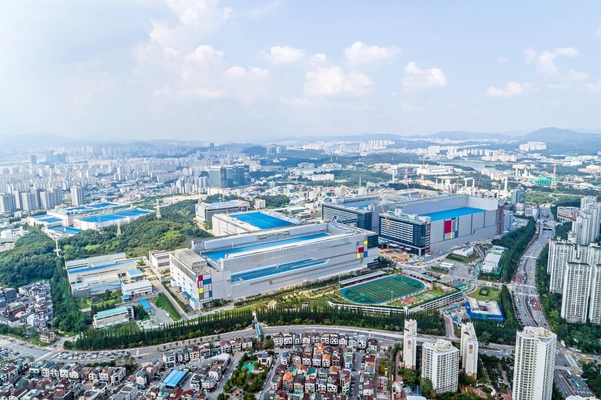Input 2021.02.18 06:00
AMD CPU supply disruption puts Intel in competition
Samsung Electronics foundry mentioned as a candidate for supply chain diversification

According to a market research firm Counterpoint Research on the 18th, 53% of TSMC’s 5-nano process-produced semiconductors this year belong to Apple. Apple currently commissions TSMC to produce all of the semiconductor chipsets installed in the iPhone, MacBook, and Mac. In addition, US semiconductor company Qualcomm is also entrusting TSMC with the 5G modem chip installed in the iPhone. Apple and Qualcomm account for 78% of the TSMC 5nm process.
Together with Qualcomm, Broadcom (Singapore) and MediaTek (Taiwan), AMD and NVIDIA, which are called the world’s top five fabless (semiconductor design companies), have only 5% and 3% of TSMC’s 5nm process share, respectively. That’s a significant drop compared to Apple.
TSMC’s sales are about 53 trillion won. Apple’s share here is estimated to be around 21-23%. In particular, in microprocesses below 10 nanometers, this proportion soars to 50-80%. The industry believes that TSMC is putting Apple as a production priority over AMD and Nvidia.

However, recently, AMD has not been able to supply CPUs and GPUs in time. Although market demand is high, it is interpreted that it is due to being placed in a lower position in production allocation. An industry insider said, “The fact that AMD’s production allocation, which is aiming to expand the CPU market share in earnest, is a subordinate priority for AMD, which is aiming to expand its market share in earnest,” said “AMD will try to escape its dependence on TSMC.”
For this reason, it is known that AMD is considering plans to expand its chipset supply chain in the future. The most promising candidate is the foundry of Samsung Electronics. Excluding TSMC, Samsung Electronics is the only company that can supply 5nm chipsets worldwide.
NVIDIA, which dominates more than 80% of the global GPU market, is also deepening its partnership with Samsung. Nvidia entrusted the next-generation GPU GeForce RTX 30 series, which debuted in September last year, to Samsung Electronics, not TSMC. Currently, the GeForce RTX 30 series is being produced on the Hwaseong Campus 8-nano process line, and there is news that it has recently signed a production contract for GPUs that will be made with 5 nm or less processes.

TSMC is said to have almost reached full capacity (100% utilization rate at the factory) with 5 nano chipset production capacity. Accordingly, fabless companies have no choice but to look for Samsung Electronics that can process 5 nanometers to increase the production of chipsets. Industry predictions that only absorbing this excess amount will have a significant synergy effect. However, in this case, it may give the impression of being attracted to TSMC, which is taking the lead in the market, so it is inevitable that the stigma of’eternal number 2’is inevitable, and there is a view that a stable customer base will not be secured.
Samsung Electronics has a strategy to overtake TSMC in the 5nm or less microprocessing process, but it is not easy. According to foreign media reports, TSMC has already signed a 3-nano process contract with Apple, Qualcomm, and Nvidia. In addition, TSMC plans to invest 31 trillion won in facilities this year alone. Samsung Electronics’ foundry-related investment this year, predicted by the stock market, is about 12 trillion won, which is one-third of TSMC. An industry insider said, “If TSMC has enough production capacity, customers can move production to TSMC at any time.”
